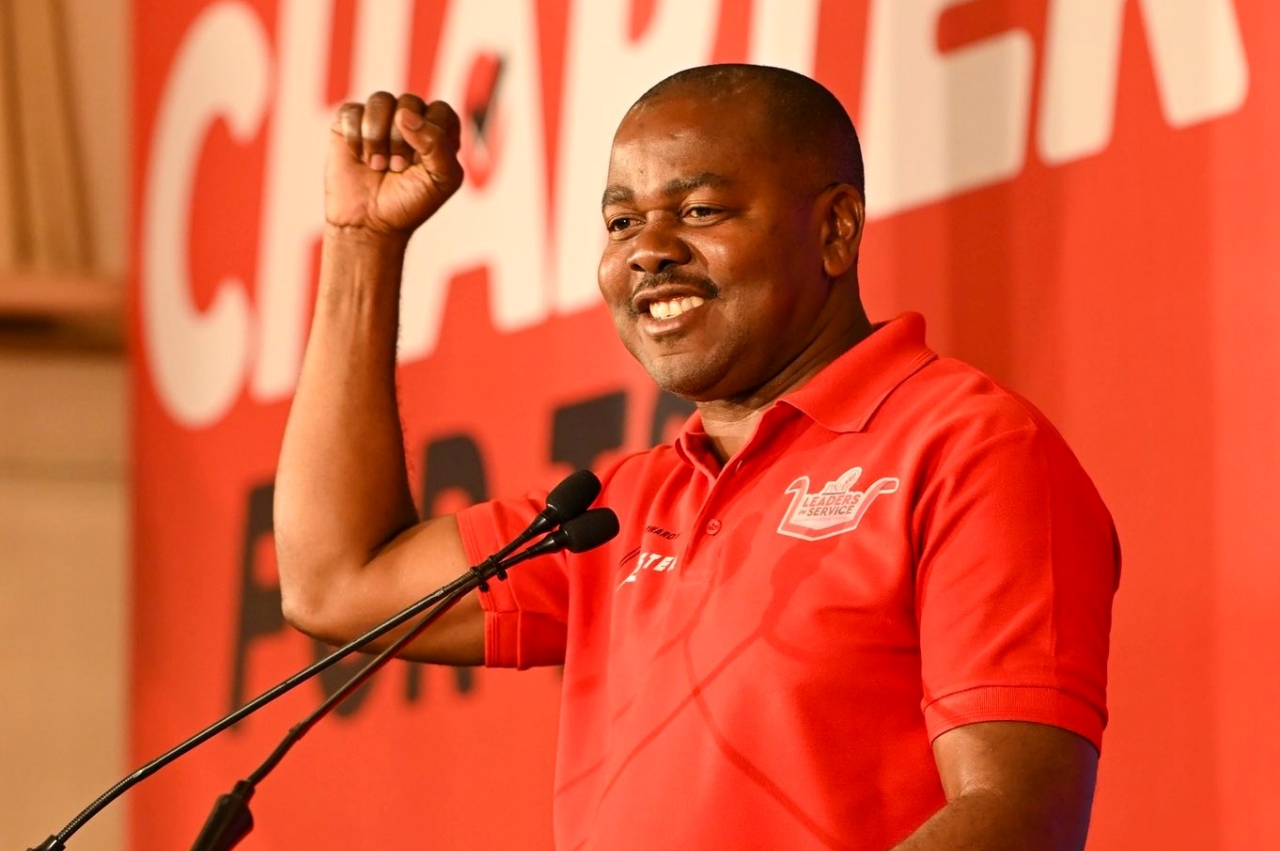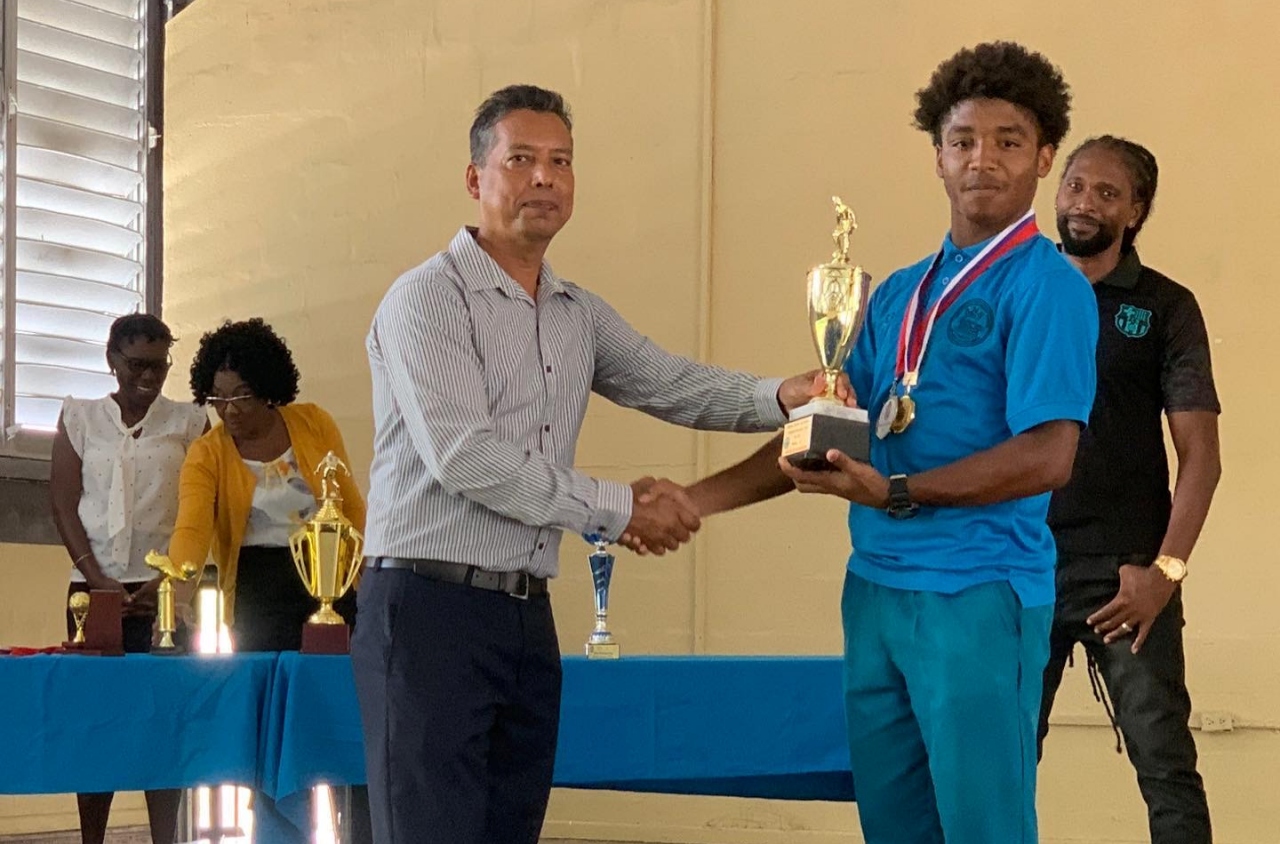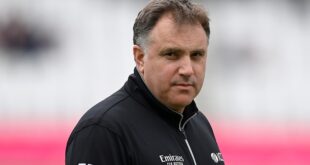I woke up one morning a few weeks ago to news that dulled the effulgence of the light that usually comes over a city like Madrid in early June. A message from my brother that Patrick White had died.¬Ý
“At school when we were all students it seemed normal,” my brother wrote. “But now when you look back you realise what he was and what he did for us all, how he helped shape us and make us the men we turned out to be.”

Words that could have been uttered by any of the thousands of boys who went to QRC during a significant portion of the second half of the 20th century. I needed time to collect my thoughts and emotions in order to attempt to pen something about a man who was a remarkable teacher and human being, who marked, for me, a before and an after in my outlook on life. ¬Ý ¬Ý
Patrick White disembarked in the Tropics, in the then British West Indian colony of Trinidad and Tobago in the late 1950s, fresh out of Oxford. Fate, in its boundless wisdom, determined that Queen’s Royal College was going to be the place where that young Englishman should find employment.
Thousands of young minds would, over more than three decades, be the beneficiaries of his wisdom, knowledge, kindness, generosity and unwavering sense of truth and honesty. In the classroom and in the music room. On the drama stage (How he loved to go on about his staging of Macbeth at QRC in the 1960s! I can almost still hear him saying “Michael Harris was my Macbeth some years ago!”) and in the college hall.
Along the corridors and on the benches under the trees on the edge of the courtyard, as he taught Latin, Spanish Language, French Language, Spanish Literature, French Literature, or, as GP tutor, discussed life, love and the universe with his young charges. And indelibly marked our lives.

I found myself in a Patrick White classroom for the first time at the beginning of the Michaelmas Term of 1973, the recipient of my first lesson in Latin. In the Second Form then, in a class of restless 12-13-year-olds that couldn’t quite work out how this giant of a man, who didn’t see, could know so well this “dead language”—which he could “speak” (No kidding!)—that he was endeavouring to teach us. Among the second-formers seated in the desks around me, the likes of Neil Byam, Geoffrey Henderson, Jürgen Bruce.
In later years, in the Sixth Form, I learned of Spanish Golden Age Literature with Patrick White, delving into the vagaries of Spanish honour codes (“honor” and “honra”) as we read and studied the works of Calderón de la Barca and Lope de Vega, and also wrestled with medieval Spanish Ballads.
The Cambridge GCE ‚ÄúA‚Äù Level syllabus, if one had gone down the Modern Languages route, meant having to deal with such issues. Patrick White was the person designated to unlock the keys to all those niceties for our 15-18-year-old minds. He was also well versed in Moli√®re. And knew a thing or two about Shakespeare.¬Ý
It was during those years in the Sixth Form that we all got to know the man better. For those who were directly taught by him, it was a priceless privilege. For those who were not, he was the college vice-principal. And that was always richly felt.¬Ý

Patrick White was a time-table making genius long before computer algorithms hit the world. He had it all in his head. The entire school syllabus.¬Ý
He knew what was going on at every moment in every class room: in the main building, in the science building, in the north block, in the west block. He knew where every teacher was, or was supposed to be, every second of the day.
And when the school bell went at 2.45 pm, he launched into music, or gave of his time to any student, from the Sixth Form to the First Form, who might have requested of him further enlightenment in any of the subjects he imparted between 8.10 am and 2.45 pm.¬Ý
The QRC fraternity has an incalculable debt with the White family. For having allowed the head of their household to give, beyond the call of duty, so much fatherly time, so much of his energy and breadth of intellect to hundreds of young souls for whom he became a de facto academic father. Year after year for many decades.¬Ý ¬Ý
In my own case, he opened my eyes to much more than what was on the syllabus.

(Copyright Getty Images)
If I live in Spain today (and have done for almost four decades) it is in no small measure due to the interest Patrick White managed to spark in me for a country that was so far, so alien to what I had grown up seeing around me in Trinidad and Tobago throughout my early, mid and late adolescence in the 1970s.¬Ý
I had the immense privilege of being able to hear from him so many things about that remote country.¬Ý
(He had been to Spain for a summer in the early 1950s, while studying at Oxford. In one of his letters to me while I was at university in France, I told him I was planning to go to Salamanca for a Spanish course for foreign students in the summer of 1980, and he gave me, in a subsequent letter, the name and address of a lady in whose house he had carried out his student sojourn and asked me to look her up and let her know that I had been a secondary school student of one of the English university students who had stayed with her all those years ago, ‚Äúthe one who couldn‚Äôt see well‚Äù.)¬Ý
I had the immense privilege, between the age of 15 and 18, of being able to ask him about Spanish Golden Age Literature. I had the immense privilege of being obliged to read to him every single sentence of every single one of my quite deficient efforts at writing “A Level” essays on Spanish Golden Age Literature. That was the good part.

The not so good but infinitely more rewarding part was having to cope with Patrick White dissecting and destroying, then guiding towards the reconstruction of those writing endeavours, sentence by sentence, full stop by full stop, comma by comma, paragraph by paragraph.
The words ‚ÄúOwen, exactly what are you trying to say here?‚Äù still resonate in my ear today. Almost as loudly as ‚ÄúReading maketh a full man; conference a ready man; and writing an exact man,‚Äù as he never missed an opportunity to remind us.¬Ý ¬Ý
Patrick White was giving, generous, perfectionist, uncompromising and unflinching in his demands for academic excellence. He wore his standards on his sleeves. He was as demanding as he was witty and understanding. As visionary as he was visually impaired.
He sometimes even grabbed chalk and went to the blackboard. (The overly curious can YouTube-search BBC Film: CLR James – Beyond a Boundary, 1976, and go straight to minute 8.45 for visual evidence of Patrick White’s use of the blackboard while teaching Latin to second-formers).
Otherwise, he would be content to sit in any chair available in any classroom, or on any of the benches around the courtyard, listening, assessing, correcting, projecting, teaching. Educating.
Above and beyond his teaching qualities, undoubtedly the most admirable thing about Patrick White was the way visual impairment mattered not one iota. It was as though it didn’t exist. We simply could not believe that that man did not see.
The way he moved around the school, from classroom to classroom, along the corridors, up and down every staircase, across the field, seeing and grasping everything there was to grasp was more than mind-boggling…
He knew every inch of every bit of Territory QRC—a place on earth he came to fashion out with clearly demarcated mental and visual parameters he carried with him, in step with his personal displacement needs, within a vision that was uniquely his. All for the benefit of his students.
He knew where he had to be and was always there. He knew what was going on in every aspect of the life of the school, and eagerly followed the college’s fortunes on the cricket and football field. He loved his cricket.

The pair added 274 for the sixth wicket to save the match.
(Copyright PA Images)
I remember him saying once that the only time he ever went to a cricket ground, the Queen’s Park Oval, in 1960, the crowd ended up throwing bottles because the local hero, Charran Singh, was given out run out and Trinidadians didn’t like it. He never in his life returned to a cricket ground.
He never tired of talking of the importance of sport, and often spoke of his love for rowing, of which he did a great deal while at Oxford. Rowing and the radio (“the wireless”, as he called it)—two of his great loves.
Listening to the BBC world service was something sacred for him. He introduced me to Letter from America, by Alistair Cook, which began airing in 1946. When Patrick White drew my attention to it in the late 1970s, so much was happening in America. ¬Ý ¬Ý
During my seven years at the most southerly of Maraval Road‚Äôs Seven Magnificent, he was QRC vice-principal. So many years later‚Äîalmost five decades‚ÄîI now fully grasp what that meant.¬Ý
In my time at QRC, we had three principals. He was vice-principal to them all. He was the sui generis embodiment of everything that transcended being seated in the principal’s chair. Above and beyond nomenclature.

(Copyright Nigel Durrant/Flckr)
Principals came and went. Patrick White was Patrick White, the vice-principal who principaled them all. From RC Laltoo, to Aubrey Garcia, to Van Stewart, to Arthur Atwell, to Winston Douglas.¬Ý
In his eulogy at the Patrick White Funeral Tribute Service last 7 June, Douglas, the last of the three principals I knew in my time at QRC, put it best:
“Patrick was my vice-principal, and when I went into the job, Patrick was many, many times more qualified than I. He could have done an immeasurably better job and I was still, as a young man, very much in awe of him.
‚Äú[‚Ķ] From the moment I walked into the office‚ÄîPatrick‚Äôs office really‚Äîhe made me feel so comfortable… Patrick taught by his mere presence… I was fortunate to have the benefit of that kind of tutelage, which is what my relationship with Patrick was largely based on. He took care of me.‚Äù¬Ý
The Douglas-White tandem was far and away the best and most formidable QRC principal-vice-principal partnership I knew in my time at the college from 1972 to 1979. Many QRC boys of my era and the years immediately subsequent to it would probably say the same.

Messieurs Douglas and White had at their disposal the most remarkable teaching artillery imaginable and knew what to do with it.¬Ý
In Modern Languages, a French department that boasted a very young William Carter, Keith Simmons, Maurice Commissiong, Lystra Rousseau, Heather Williams. And Patrick White, who knew a thing or two about Moli√®re.¬Ý
An English department that boasted Joy Clarke, Diana Francis, Wilcox Raymond, Victor Questel, Godfrey Steele, Michael Lilla, and Winston Douglas himself. And Patrick White, who knew a thing or two about Shakespeare.¬Ý
A History department headed by the inimitable Rudy Piggott and included Michael Mahabir and Gail Boxhill. And Patrick White, who knew a thing or two about British and European history.¬Ý
A Latin department that had Basil Jordan and WD Isaacs (till his retirement). And Patrick White, who knew a thing or two about declensions and conjugations and Caesar‚Äôs Gallic wars.¬Ý

A Spanish department that boasted a very young Earl Best, Martin Douglin, Roland Samuel. And Patrick White, who knew a thing or two about Spanish Golden Age literature.¬Ý
A Science department under the stewardship of a certain E Norman Lambert and, later, Ms Faziah Rahman.¬Ý
An Economics-Commerce department that boasted Gordon Mohipath, John Baptiste and Ms Boxhill. Twas, indeed, a golden era.¬Ý
Among those whose paths crossed in my Sixth Form years and with whom I shared many a Patrick White GP tutorial, are the likes of the Williams brothers, Eric and Ernest; the Mapp brothers, Danford and Glenford; the Leggard brothers, Keith and Ken; Philip Rochford and Kenneth Marcelle; Courtenay Mark and Leon Copeland; Neil Lewis and Charles Simba Inniss; Ronald Howard and Kenneth Joseph; Philip Payne and Brian Lee Heung; Colin Suite and Gerry Brooks; Ronald ‚ÄúButty‚Äù Mark and Floyd Springer; Anthony Jordan and Curtis Mayers; Kenneth Chai Hong and Winston Roberts; Wesley Gibbings and Brian Harry; Jean-Jacques, Robert and Stuart Best; my brother Warren; Carl James and Rudyard Davidson. And many, many more who, I don‚Äôt think I‚Äôm wrong in saying, were not insignificantly touched by Patrick White‚Äôs imprint.¬Ý ¬Ý ¬Ý ¬Ý

The first time I sat in a classroom for a class in Spanish, at the beginning of the Michaelmas term of 1973, the person doing the teaching was a man called Horace Scobie. He told us he had been taught by Patrick White when he was at QRC in the late 1960s.
The person who taught me Spanish the year I did my “O” levels and was also one of my Spanish teachers in the Sixth Form went by the name of Earl McDonald Best, who had also been taught by Patrick White when he was at QRC in the 1960s.
By my calculations, when Patrick White arrived at QRC in the late 1950s, Winston Douglas, who became principal in 1977, was finishing his ‚ÄúA‚Äù levels at QRC, and probably was taught (or came close to being taught) by Patrick White.¬Ý
The impact of teachers of that ilk marked the beginning of a golden age for yours truly. The Douglas-White tandem so powerfully embodied what Douglas called, at Patrick White‚Äôs funeral tribute service, ‚Äúthe QRC ethos‚Äù. Hundreds of Royalian roosters of the 1950s, ‚Äò60s, ‚Äò70s and ‚Äò80s will, I feel certain, understand what I am trying to say here. The one figure central to all those decades was Patrick Leigh White.¬Ý
At the end of his long and noble innings (he must have been in his early nineties when he decided to begin his ascent to The Great Pavilion) it is safe to say he was more than vice-principal. He was—is!—an institution.

Thanks, Mr White.¬Ý
PD: What has to be done for the college library to be called The Patrick White Library? Or for the entrance to the main building (facing the lawn on the Maraval Road side) to be called The Patrick White Entrance? ¬Ý
If/when that is done, I know who will be on the first flight from Madrid to Maraval Road, hoping to make it on time for the inauguration ceremony.¬Ý ¬Ý ¬Ý ¬Ý ¬Ý¬Ý
Owen Thompson, cricket and calypso lover and Atlético de Madrid fan, was born in Tobago, went to school in Trinidad, worked in Portugal, lived for decades in France and Spain and travelled widely in Europe, making him a writer with a world view.
 Wired868 Wired868 for smart sport news and opinion
Wired868 Wired868 for smart sport news and opinion







I’m sorry it was Ms geraldine Connor. And I forgot Mr Jordan, my english teacher in first form in 1976! If I have forgotten any other name of an acharya (Sanskrit for teacher) of mine, please do forgive me for I am a very foolish fond old man, nearly threescore!
– Naveen K. Gupta/ Delhi/India/05.09.2024
In India Kismet and fate are intermixed! So it was with great fondness today on 05/09/2022 I read “He knew every inch of Territory QRC”—a man called Patrick White by Owen Thompson, In Memoriam dated: Saturday 16 July 2022.
5th September is celebrated as Teachers Day in India in memory of Dr Sarvapalli Radhakrishnan, the republic’s second President and one of the foremost scholars on comparative religion and Philosophy and the man who gave Mrs Indira Gandhi some real hard times!
I was in QRC from 1976-1982 and my younger brother was there from 1979-1981. He and I had some common teachers and I think we were the only two Indian brothers who were studying in Form 6 and Form 1 at the same time! Our father was Second Secretary at High Commission Of India in Port-Of-Spain and we lived a tone’s throw from QRC at Picton Street!
One of our common teachers was Shri Earl Best who was the former editor of this very slick online publication and was a dreaded footballer and Spanish teacher in QRC! He was like coconut; tough outside, soft inside!
I’m 59 and my brother is 55 but QRC and our teachers remain with us, etched forever in our hearts! So today on Teachers Day in India I salute and say a grateful namaste to the teachers who shaped I and my brother:
Mr Van Stewart & Mr Winston Douglas (Principal), Mr Patrick White (Vice Principal), Mr Rudy Piggott (the Pharoah), Mr Earl Best (my Spanish teacher), Mr Sylvester John ( He taught Mathematics to both of us) Mr Martin Douglin (my brother’s Spanish teacher), Mr Lambert (my Chemistry teacher), Mr Michael Ramjohn (my Biology teacher), Mr Sylvester John (my Physics teacher) Mr William Carter, (my French teacher and later Principal), Mr Maurice Commissiong (my French teacher), Ms Joy Clarke (My form teacher in First form) , Mr Raymond, Mr Victor Questel (my English Literature and Drama teacher in 2A) and Mr Michael Lilla, my guru and My latin teacher in 2A, form teacher in 3A, 4A and GP teacher in lower and sixth! If I have forgotten
I do not know when I will be able to stand in the Assembly Hall where once we had music classes with Ms. Connors in 1976! And cry!
– Naveen K. Gupta/ Delhi/India/05.09.2024
Great tribute Owen….I found this article while searching for you after hearing Harry Belafonte died. You turned me on to him back in Portugal in 1985!. Hope you are well!
This, brings back a ton of memories, i knew your Form 2 classmates, where are Neil Byam, Geoffrey Henderson, Jürgen Bruce.
Thanks
Owen yuh preach meh bros.
What a beautifully written tribute. To have one defined by the qualities of wisdom, knowledge, kindness, generosity and unwavering sense of truth and honesty, is perhaps the most salutary life one could have lived.
Absolutely brilliant, Owen! “For those who were directly taught by him, it was a priceless privilege.” I got chills when I saw the photo of the Plaza Mayor in Salamanca – a place in which I socialized, studied, drank too much at times, chilled out and of which I was in awe the very first time I walked into it in 1987. On the train ride from Madrid to Salamanca, I saw everything that Patrick White said I would see if ever I had the good fortune to visit and travel thru Spain. And yes, Wesley, that amazing, effortless ability to bring you to attention while he stood a few feet outside the office and bellowed down the corridor to some of those slackers in Form 2R (not me…some of my classmates ?), the classroom next to the Hall, with arms akimbo and his chin in his chest: “Ahmm…please!”
Owen, Thanks for a very touching tribute. It was a pleasure to read. My sister, Teresa shared it in a family chat and I will continue its expansion. One observation though, in honour of his perfectionism and only because he’s not here to correct you himself, it’s “Leigh” not “Lee”. Leigh White was his grandfather and Leigh comes down the generations, it’s my 3rd name and the second of one of my sons and one of my granddaughters. Yes, in true Patrick-like iconoclasm and defiance, it is now also carried by a girl. As for sharing him with QRC, here’s the thing, as far as his family was concerned, he was always there, as it appears he was for QRC… presence? You are all welcome, Mark
The correction has been made. Thank you.